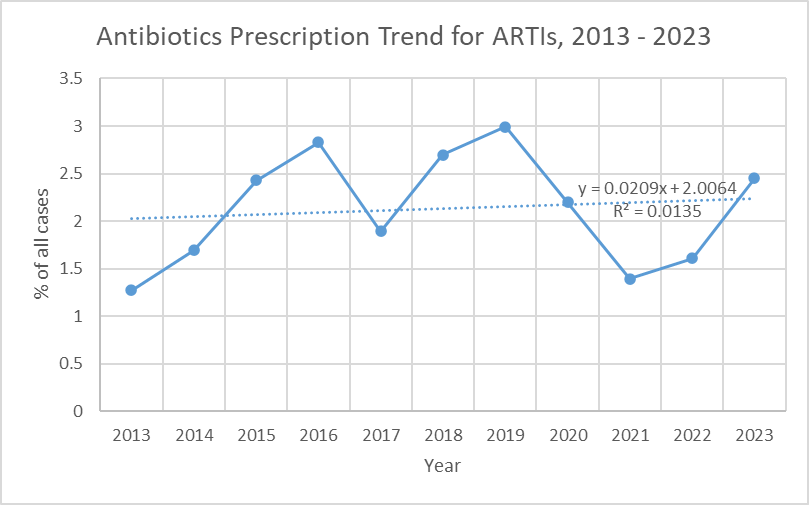Emergency Medicine 6
Session: Emergency Medicine 6
289 - Trends in Antibiotic Prescription for Acute Respiratory Tract Infections in Pediatric Emergency Department in South Bronx, 2013 - 2023
Saturday, April 26, 2025
2:30pm - 4:45pm HST
Publication Number: 289.6631
Olaseni P. Prince, BronxCare Health System, Bronx, NY, United States; Charles Chinonyerem. Ihedioha, bronx-lebanon, Bronx, NY, United States; Mukosolu Ben-Okafor, BronxCare Hospital, Bronx, NY, United States; Sarah Erum, Bronxcare Health System, Bronx, NY, United States; Oluwabusayomi J.. Ayantoyinbo, Bronxcare Health System, Bronx, NY, United States; Sheena Mathew, Bronx care health system, Bronx, NY, United States; Sandipagu P. Kant, Bronx Care Health System, Belleville, NJ, United States

Olaseni P. Prince, MD MPH
Resident
BronxCare Health System
Bronx, New York, United States
Presenting Author(s)
Background: Antibiotics-resistant infections are increasingly becoming a major problem in healthcare worldwide, and it has been identified as a major cause of mortality, morbidity, and contributes to the exponential increases in healthcare cost in the United States. The inappropriate prescription of antibiotics for conditions in which antibiotics are not generally indicated, such as viral acute respiratory tract infections (ARTIs), is a major factor leading to antibiotics resistance.
Objective: To describe antibiotics prescription trend for ARTIs in the pediatric emergency department in the past decade and during RSV season.
Design/Methods: We conducted a cross-sectional study of pediatric patients aged 0-21 years who received care for acute respiratory tract infections (ARTIs) as defined by the International Classification of Diseases codes (ICD-9 and ICD-10) at a South Bronx pediatric emergency department from 2013 to 2023. Patients with concomitant diagnoses for which antibiotic therapy may have been justified were excluded. Information about antibiotics prescription, age, sex, race, seasonality, and other covariates were extracted and analyzed. Cochran-Armitage trend test was utilized to determine the trend in antibiotics prescription. Multivariate logistics regression was used to analyze the association between antibiotics prescription rate and age, and other predictors.
Results: Our study included 23,481 pediatric emergency room ARTIs encounters. Overall antibiotics prescription rate during the study period was 2.12%, representing an increase of 92.91% from 1.27% in 2013, to 2.45% in 2023. The linear trend in antibiotic prescription was, however, not statistically significant (P=.3494). Based on multivariate logistic regression analysis, RSV season is significantly associated with increased antibiotic prescription rates (aOR=1.33 [95%CI: 1.02–1.73]), adjusting for sex, age, and season of the year (seasonality). And younger patients aged 0-2 years compared to 12-17 years have a higher rate of antibiotics prescription (aOR=2.56 [95%CI: 1.47–4.46]), adjusting for sex, RSV season, and seasonality.
Conclusion(s): In the past decade, antibiotics prescription rate for ARTIs is 2.12%, and it has gradually increased from 2013 to 2023 in South Bronx. Antibiotics prescription rate is higher during RSV seasons, and among children under the age of two. Knowledge of this trend will help increase the awareness about antibiotics stewardship efforts to limit antibiotics prescription for conditions in which they are not indicated.
Antibiotics Prescription Trend for ARTIs, 2013 – 2023


